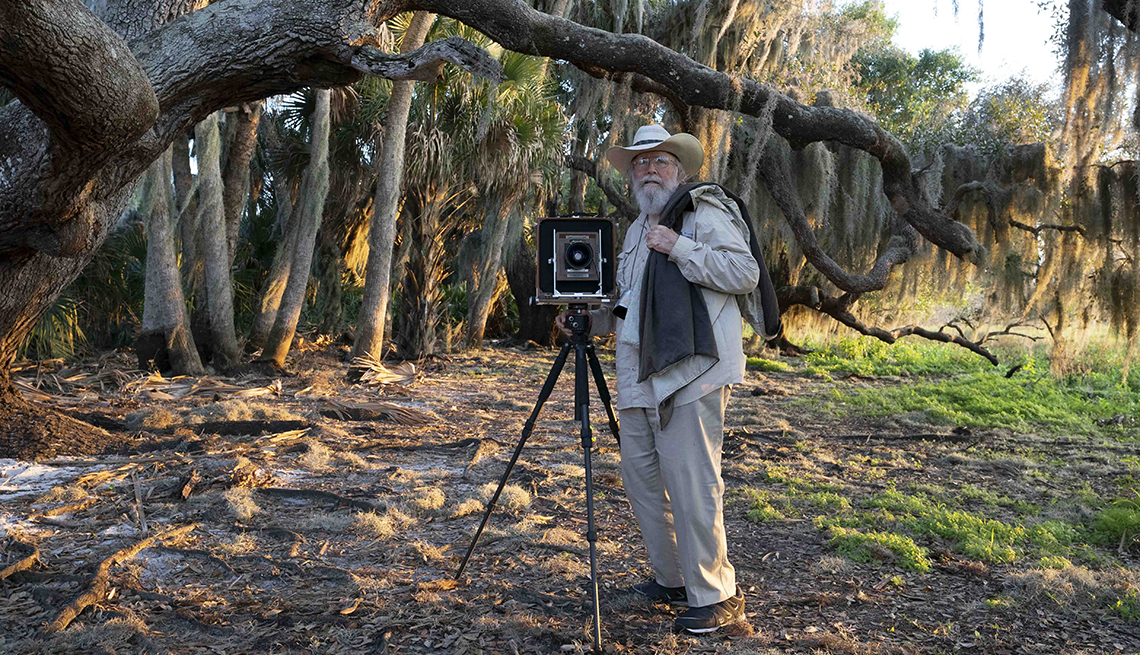AARP Hearing Center
Funny, when I moved to Florida in 1979, I didn't see anything worth photographing. I thought swamps were dangerous. Then I met a fifth-generation Floridian from Big Cypress Swamp who introduced me to his world — taught me where alligators eat, how to avoid snakes, things like that. Now I spend a lot of my time in swamps making photographs. I'm trying to show people the natural beauty, to let them know what we're in danger of losing. Millions of people live within a short drive of the Everglades, but most never see their interior beauty. I've been photographing in Big Cypress and the Everglades since 1984, and I have never met another person out there in the woods. I guess you could say I was social distancing before it was cool.
I look for vistas that haven't been manipulated by man. A lot of times I find a spot that I really like but the light is bad, or the water level or plants are not right. I have one image in my gallery that took about an hour and a half of swamp walking to reach. I first saw the spot in 2000 and took a photo there every year until 2009, when everything finally came together. OK, that's called persistence or stupidity — one of the two.
For 40 years I used an 8-by-10-inch, large-format camera and developed prints in my darkroom. Then in 2017 I had a stroke, and I began using a small, powerful digital camera, but I still create 8-foot-wide prints that people can almost walk into. When you're out in nature, you're scanning here and there and putting what you see together with your feelings. That's what I want to recreate with my prints: the sense that the Everglades are dramatic and beautiful, and that we should help them stick around. Global warming and sea-level rise are urgent threats. The Everglades average 3 to 8 feet above sea level. It could disappear under the ocean if we don't act.
Mentally I don't feel old, but physically it is a different story. After my stroke, I couldn't even get into a wheelchair at first. After six months, I was on a walker. I've taken that walker over rocks and logs, into the ocean and the swamp. It is thrilling. Nature fills you with vitality. The environment is an amazing living organism, and that's what I want to share.
— As told to Brennen Jensen


































































